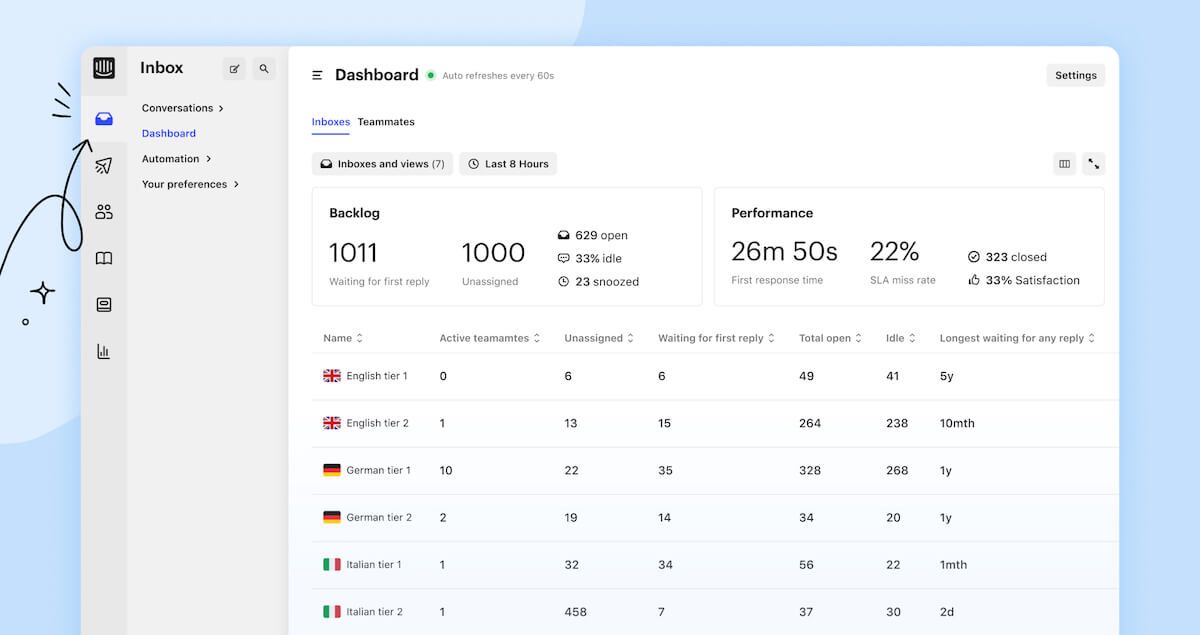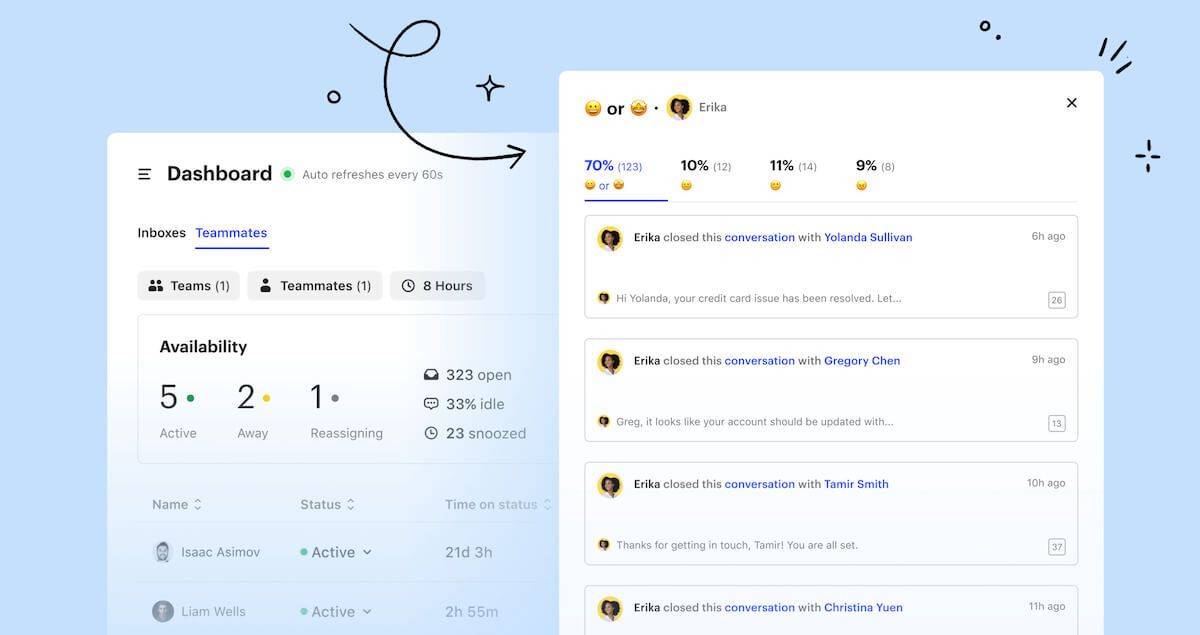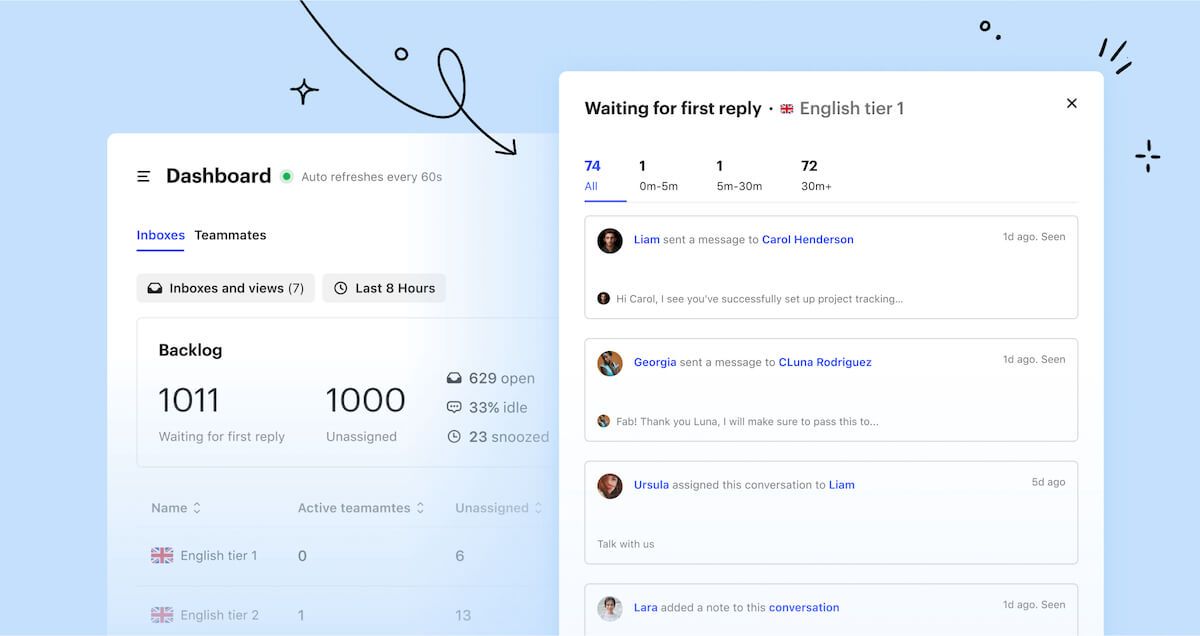
Announcing our new real-time dashboard: Monitor your most important metrics in one place
Support managers are consistently keeping track of conversation volume, capacity, and team performance. Reliable, up-to-date information is crucial to keep the team running smoothly and efficiently.
When all of this information is located in different places, it can be difficult to get an overview of what’s going well, what needs attention, and what trends are revealing themselves. Support managers make countless rapid decisions every day – they need a convenient, reliable source of information to help them make the best choices for their teams.
Today, we’re excited to launch Intercom’s real-time dashboard. With one click, support managers can get a clear overview of what’s happening across their support team.

“Having this new feature available for us was a game changer! I use the dashboard to manage the amount of tickets in each inbox and the available agents for each inbox. This used to be a very demanding and time-consuming process and now I can have a full view in one place. My team also uses it at the end of their shift to get an overview on how they performed that day.”
– Vera Rosado, Customer Support Manager, Pipedrive
Get a holistic view of volume and performance across inboxes
On a fast-moving support team, managers need to be able to act quickly when conversations start piling up. When information is scattered it can slow the team down and impact essential customer interactions. They need information in real time, broken down in the most useful way, to ensure their team is assigned effectively and the right measures are in place to deal with high volumes.
We’ve consolidated these details into one easy-to-read dashboard. Now you can easily monitor the conversation volume across inboxes and the rate your team is replying to customers, react quickly to any changes, and assign teammates to the areas where they’re most needed.
“Seeing the volume of unassigned conversations at a glance means we can ensure that agents are assigned to the inboxes which will support our customers in the most efficient way possible. This has really helped our real-time team with the scheduling of our agents. Having the dashboard update in real time has also helped us monitor key metrics like first response time to ensure that we can better maintain our SLA.”
– Annie Walker, Operations Project Manager, ClickTravel
With the real-time dashboard, you can:
- Get an overview of the backlog your team needs to handle at the beginning of a shift. At a glance, you can see the volume across the different inboxes throughout the day, filtered by metrics like total open, unassigned, and waiting for the first reply.
- Monitor the number of active teammates per inbox to ensure each person is assigned to the most critical inboxes and you’re supporting your end users in the most effective ways.
- Assess your end users’ wait time to decide whether to move teammates from one inbox to another.
- Monitor KPIs like SLAs miss rate, first response time, and CSAT to guarantee your teams are on track to hit their targets.
Discover opportunities to coach teammates and improve performance in real time
Historically, support managers coached teammates in retrospect, after measuring their performance against crucial KPIs. We know that timely, contextual feedback is more effective – the dashboard enables support managers to discover areas for improvement in real time so they can support employees and see results right away.
“The real-time reporting dashboard has become an absolute necessity in our day-to-day operation. The ability to grab the immediate rundown of how our agents and teams are holding up has been an amazing tool to help coach our team to be able to handle tough conversations that they may have not experienced previously.”
– Ian Cianci, Technical Care Specialist, Fetch
Improve your team’s efficiency by:
- Monitoring the number of idle conversations assigned to a teammate (i.e. no replies from the customer or teammate for more than a defined time). Encouraging support reps to close or snooze conversations as needed increases their likelihood of being assigned new conversations and contributing to the overall backlog.
- Getting an overview of teammates’ KPIs like first response time, CSAT, and the number of conversations they participated in. Click on a metric to quickly review conversations with high response time or a low CSAT.
- Understanding and managing teammates’ offline time with first online, time on status, and descriptive away statuses such as “in a meeting”, “on lunch”, or “done for the day.”

Get started!
There’s no setup required, just head to the new dashboard in your Intercom Inbox. To learn more, visit the help center.








